Hair is considered index of health. It is also considered as a manifestation of our identity both personally and publicly. For both genders men and women, when hair start turning into gray color, when they start becoming dry, fizzy, when they start falling out, self esteem starts getting affected. This is why it become important to nurture your hair.
Why hair is important for women
Especially for women hair is a symbol of femininity. This connection with hair holds true for all religions and races. Do you know during the civil war hundreds of women soldiers disguised themselves as men by cutting off their hair, eventually being put behind bars upon discovery? And, after the Battle of France in 1940, French women’s heads were sha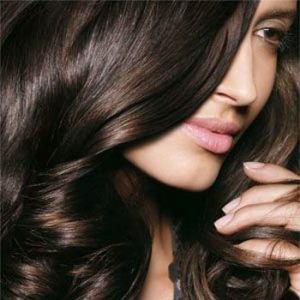 ved as punishment for their sexual relationships with German soldiers. This was done to hurt those women’s ego, femininity and their identity. For a woman, abundance of long cascading hair is a glory.
ved as punishment for their sexual relationships with German soldiers. This was done to hurt those women’s ego, femininity and their identity. For a woman, abundance of long cascading hair is a glory.
Biologically hair consists of the most vital sources of energy for a human. The significance of hair on our head is much more than just looking good. If we leave our hair uncut, it grows to a certain length and stops growing by itself; the length may differ from person to person. In the yogic tradition, hair is considered a wonderful gift of the nature that helps to raise the Kundalini energy. This energy has the power that increases further energy, tranquility and intuition.
Historically, if you look a few decades back, people from different culture, did not cut their hair. Their hair was cut compellingly, as a symbol of slavery, during the time they were subjugated or enslaved. Because at that time conquerors understood that, certain natural power gets decreased because of hair cut and becomes easy to control them. Do you know that when the hair on our head grows to its full-grown length, it produces calcium, phosphorous and vitamin D? They enter the lymphatic fluid and gradually to the spinal fluid through the two ducts on the top area of the brain. These ionic changes create the more efficient memory and results good physical energy, stamina and endurance.
Furthermore, hairs are the antennas which channel the gathered “Sun Energy” or “Pranic Energy” to the Frontal Lobe (part of the brain used in the visualization and meditation). So, these antennas act as a tube to bring the greater quantities of subtle cosmic energy. And, if you have cut your hair and feel like growing it again, it requires lots of life energy and nutrients to re-grow the short hair. It takes at least three to four years from the time of your trimmed, for the new antennas to create at the tips of the hair.
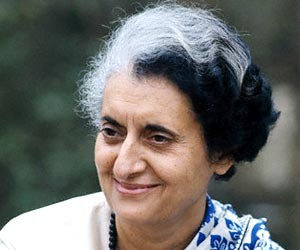 Women Liberation: The women’s liberation movement was the collective struggle for equality; it had begun right from 1950s and became most active during the late 1960s and 1970s that sought to free women from oppressive male supremacy. In the 1950s, female communists and soldiers in China preferred a short bob cut just below the ears. This simple hairdo was named the “Liberation Hairdo” because it symbolized women taking control over their own lives – taking their decisions and being responsible for the same. Women continue to use their hairdo to express themselves. Till date, girls and ladies who prefer a short haircut are labeled as ‘tomboyish’ and subtly they do stand for liberated thoughts and actions. But, some short hair styled women does look gorgeous. Indira Gandhi was counted among the most beautiful women in the world. Usually, short hairs styled women are intelligent and creative. Because they want to achieve many things at a go, they tend to keep short hair which liberates them from the time consumed on maintaining and styling of hair.
Women Liberation: The women’s liberation movement was the collective struggle for equality; it had begun right from 1950s and became most active during the late 1960s and 1970s that sought to free women from oppressive male supremacy. In the 1950s, female communists and soldiers in China preferred a short bob cut just below the ears. This simple hairdo was named the “Liberation Hairdo” because it symbolized women taking control over their own lives – taking their decisions and being responsible for the same. Women continue to use their hairdo to express themselves. Till date, girls and ladies who prefer a short haircut are labeled as ‘tomboyish’ and subtly they do stand for liberated thoughts and actions. But, some short hair styled women does look gorgeous. Indira Gandhi was counted among the most beautiful women in the world. Usually, short hairs styled women are intelligent and creative. Because they want to achieve many things at a go, they tend to keep short hair which liberates them from the time consumed on maintaining and styling of hair.
Hair thinning and balding is a nightmare. Unlike in men, where there will be complete hair loss in certain areas, female pattern thinning, most often involves disperse thinning and production of thinner hair fibers, where there is less destruction of hair follicles in specific regions of the skin. Hormones are a key factor for this clause. Both the male hormone Androgen (responsible for body hair growth) and the female hormone Estrogen are present in a woman’s body. In men, Androgen, ironically, destroys hair follicles in those with a genetic tendency to this kind of baldness. This is known as Androgenetic Alopecia. Fortunately for women, the hormone Estrogen counteracts this negative action of Androgen. Natural treatments are always best than the hormone-replacement therapy.
Let’s not forget that hair and beauty is a multi billion-dollar industry. The overall Beauty Business in India is growing phenomenally with the cosmetics market growing at 15-20% annually. The retail beauty and cosmetics market in India currently estimated at USD 950 million is pegged at USD 2.68 billion by the year 2020.
An average woman visits a salon at least once a month. We care for our hair so much not just because we believe that our appearance is a key to our career and social status but also because our hair represents our personality, thoughts and beliefs. For centuries, men and women have been changing hairstyles suitably for occasions. And, hair contributes greatly to a person’s self-esteem, actions and motives. In India especially, woman’s hair is undeniably revered. Most Indian women don’t like keeping short hair styles. Even today, in Indian households short hair is a taboo.
What is tricology
 Trichology is the branch of dermatology that deals with the scientific study of the health of hair and scalp. A Trichologist is one who diagnoses the causes of hair fall, hair breakage, hair thinning, and trimness of hairs and diseases of the scalp and treats them. A qualified Trichologist can identify and treat all forms of hair loss, hair shaft breakage and scalp disorders. Hair is one of the body’s most metabolically-active tissues. Please remember hair often reflects the first signs of body’s internal disturbance. The hair and scalp are just as important a
Trichology is the branch of dermatology that deals with the scientific study of the health of hair and scalp. A Trichologist is one who diagnoses the causes of hair fall, hair breakage, hair thinning, and trimness of hairs and diseases of the scalp and treats them. A qualified Trichologist can identify and treat all forms of hair loss, hair shaft breakage and scalp disorders. Hair is one of the body’s most metabolically-active tissues. Please remember hair often reflects the first signs of body’s internal disturbance. The hair and scalp are just as important a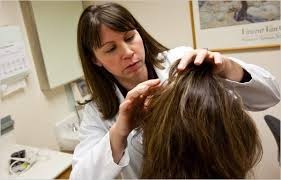 s other areas of the body while doing the overall assessment of health.
s other areas of the body while doing the overall assessment of health.
All too often when we go for a medical checkup, it does not include hair and scalp examination. I think, if hair checkup is included in the overall examination, it might help detecting some conditions and would help both doctor and patient in getting early diagnosis of some serious illness. Trichology is very important and is rapidly growing its esteem in the beauty industry.
Who can become a trichologist?
Skills required to become a trichologist are a basic understanding of science, because that’s very important in the profession; besides soft skills are very important. The trichologist deals with the extremely delicate body part. Most people are very sensitive about their hair. The trichologist must be able to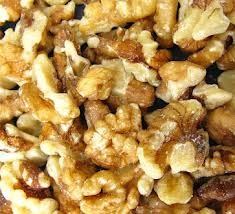 empathize with patients. Lot of patience is required to hear out the patient, listening carefully to the complaints and analyzing gaps, diagnostic skills are equally important for a predictable treatment. The advantage of going to see a trichologist than a General Practitioner (GP) is that trichologists spend all their time dealing with scalp and hair, and are familiar with the science behind it; whereas, GPs are not normally trained to study hair and scalp. They do in some cases, when they choose to, but the general rule is that the trichologist who’s dealing with it all the time will be able to a
empathize with patients. Lot of patience is required to hear out the patient, listening carefully to the complaints and analyzing gaps, diagnostic skills are equally important for a predictable treatment. The advantage of going to see a trichologist than a General Practitioner (GP) is that trichologists spend all their time dealing with scalp and hair, and are familiar with the science behind it; whereas, GPs are not normally trained to study hair and scalp. They do in some cases, when they choose to, but the general rule is that the trichologist who’s dealing with it all the time will be able to a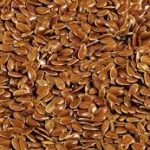 dvise you better than the GP can.
dvise you better than the GP can.
So, if the mirror shows you, your hair growing horribly thin, don’t hide behind a scarf with awkwardness. Visit a trichologist immediately; he/she will help you deal with your problem. Some foods with great estrogenic properties and which aid hair treatment are Soya, Walnuts, Flax seeds and Green tea. And, of course lots of water intake helps you deal with hair problems.













































